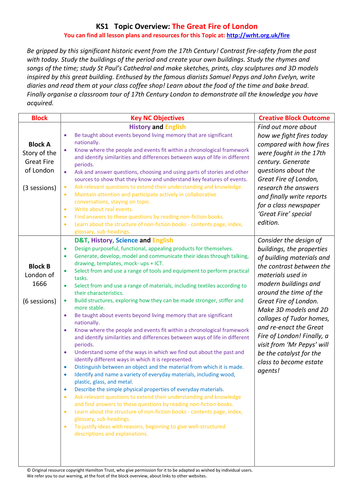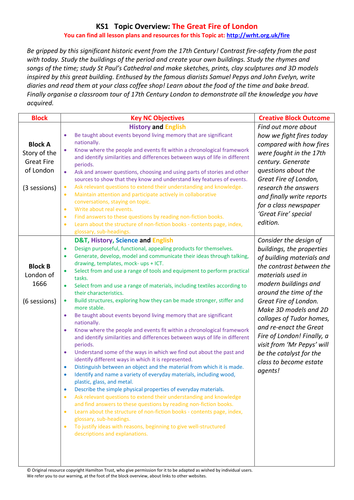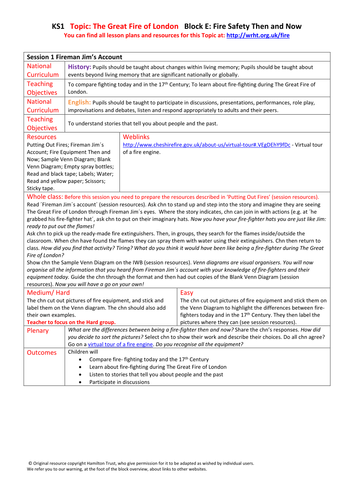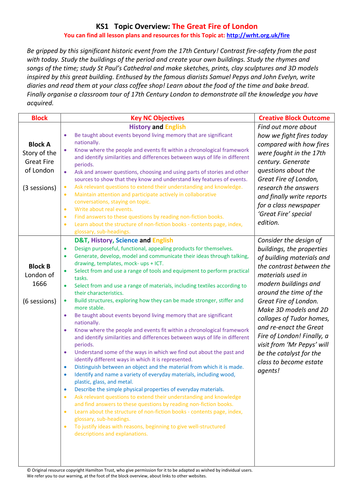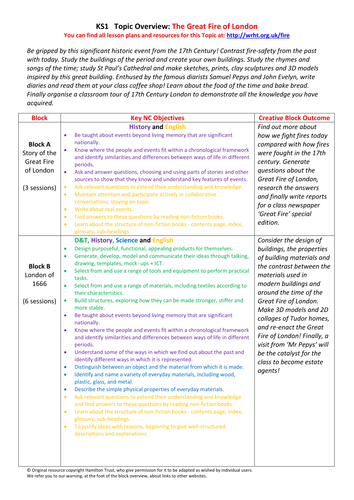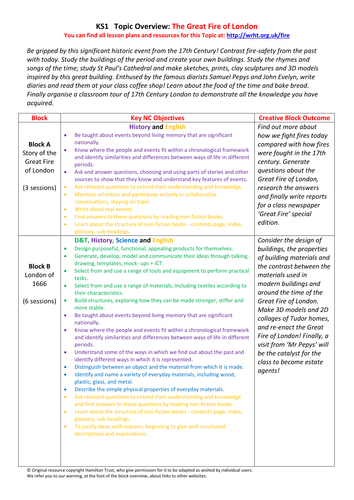
3k+Uploads
10009k+Views
11617k+Downloads
Cross-curricular topics

Dinosaurs and Fossils - Dinosaur Extinction - Upper Key Stage 2
Become an enthusiastic, expert palaeontologist!
Learn about the climate, vegetation and living things of the late Cretaceous period. Research the main dinosaur extinction theories; plan and argue the case for each theory in a class debate. Finally compose a soundtrack for life after the extinction event, ready to play to guests in a darkened, atmospheric space.
Includes:
- Topic Overview
- Block Overview
- Lesson 01: End of an era
After researching the timeline of the end of the Mesozoic Era, gain an understanding of the climate, vegetation and living things of the late Cretaceous period.
- Lesson 02: Delving deeper
Research the variety of extinction theories and consider arguments for and against each theory.
- Lesson 03: Dino debate
Plan and argue the case for each extinction theory in a class debate before voting for the most plausible.
- Lesson 04: Extinction Music in the dark
After reviewing the different extinction theories, compose a class soundtrack for life after the extinction event. Play to guests in a darkened, atmospheric space.
Find more lesson plans and resources at www. hamilton-trust.org.uk.

Dinosaurs and Fossils - Dinosaur DIY - Upper Key Stage 2
Be a palaeontologist! Research key features of dinosaurs and how they are adapted to their environment; design your own dinosaur perfectly adapted to either the Triassic, Jurassic or Cretaceous period; create the structure, cover and paint your dinosaur model; finally, contribute to an ‘I Spy Dinosaurs’ class book and share your knowledge with other children.
Includes:
- Topic Overview
- Block Overview
- Lesson 01: Dino DIY - planning
Research key features of dinosaurs and then design a dinosaur perfectly adapted to either the Triassic, Jurassic or Cretaceous period.
- Lesson 02: Dino DIY - making
Working from a design plan, create the structure of your dinosaur.
- Lesson 03: Dino DIY - painting
Research skin colours and textures of modern living things and apply your knowledge to create the most suitable surface for your dinosaur model.
- Lesson 04: 'I spy' a DIY Dino
Contribute to a class ‘ I Spy’ dinosaur book with photographs, list of characteristics and possible ‘footprints’.
Find more lesson plans and resources at www. hamilton-trust.org.uk.

Dinosaurs and Fossils - Dinosaur Species - Upper Key Stage 2
Become an enthusiastic, expert palaeontologist!
Learn about the species of the Mesozoic Era with very practical and engaging activities. Reconstruct a dinosaur by adding clay to a dinosaur skeleton, make a Dino-family jigsaw, take part in an animal survival game, make a 3D Mesozoic timeline showing the three main eras and populate each section with pictures of the correct dinosaur species.
- Lesson 01: Flesh it out!
Learn about how palaeoartists reconstruct dinosaurs from fossils and try it yourself!
- Lesson 02: Dino families
Learn about the main family groups of dinosaurs and make a Dino-family jigsaw.
- Lesson 03: The survival game
Investigate dinosaurs and their environments, understand how they would have competed for resources and take part in an animal survival game.
- Lesson 04: 3D Mesozoic Timeline Part 1
Find out about the three main periods of the Mesozoic Era and portray their landscapes and vegetation in a 3D model.
- Lesson 05: 3D Mesozoic Timeline Part 2
Populate your model of the Mesozoic Era with pictures of the correct dinosaur species living in each of the three periods.
Find more lesson plans and resources at www. hamilton-trust.org.uk.

Dinosaurs and Fossils - Ice Age Fossils - Upper Key Stage 2
Become an enthusiastic, expert palaeontologist! Study a distinctive Victorian silhouette showing palaeontologist William Buckland, his family and his fossils. Learn about his discoveries and links to Mary Anning. Research the Ice Ages and Ice Age animals in Britain. Exhibit work and invite visitors to share in your learning.
Includes:
- Topic Overview
- Block Overview
- Lesson 01: The Buckland Silhouette
Learn about William Buckland the famous palaeontologist, his family life and his fossil hunting.
- Lesson 02: The first dinosaur
Find out more about Buckland, his discovery of the first named dinosaur, the Megalosaurus, his other discoveries and his links to Mary Anning.
- Lesson 03: The Ice Age
Make a timeline showing the Ice Ages and the Ice Age animals in Britain.
- Lesson 04: Making fossils
Make replica dinosaur and Ice Age fossils and experimental silhouettes.
- Lesson 05: Experimenting with silhouettes
Try out three different ways of making silhouettes: casting shadows, using sun-printing and using a shadow theatre.
- Lesson 06: Making a silhouette
Choose one method of making a silhouette, inspired by the Buckland picture, and record it using a camera or as a piece of art.
- Lesson 07: Sharing the silhouettes
Label their silhouettes and plan an informative talk; then decide on a design for an exhibition and invite people to enjoy their work.
Find more lesson plans and resources at www. hamilton-trust.org.uk.

Dinosaurs and Fossils - Fossil Humans - Upper Key Stage 2
Become an enthusiastic, expert palaeontologist!
Learn about the fascinating story of human evolution. Create your own family tree and relate it to the family tree of the human species. Find out about how the early humans dispersed around the world. Use storytelling to pass on your learning about human evolution to other children.
Includes:
- Topic Overview
- Block Overview
- Lesson 01: The human family tree
Children learn about and create their own family tree of human evolution.
- Lesson 02: The human journey
Make a map showing early human dispersal around the world.
- Lesson 03: Human fossils
Learn about four key human fossils and put them on a timeline.
- Lesson 04: Meeting Neanderthals
Take part in a philosophical enquiry about Homo sapiens meeting Neanderthals.
- Lesson 05: The human story
Share your learning about human evolution through storytelling.
Find more lesson plans and resources at www. hamilton-trust.org.uk.

Dinosaurs and Fossils - Fossil Footprints - Upper Key Stage 2
Be a palaeontologist! Excavate a fossil block and research the three main epochs of fossils. Find out how fossils are made and make your own. Tour your school sharing your knowledge with other children.
Includes:
- Topic Overview
- Block Overview
- Lesson 01: How footprints get made
Learn about how fossil footprints are made and how we investigate them. Make your own plaster cast footprints.
- Lesson 02: Dinosaur footprints
Make dinosaur feet and footprints. Learn what footprints can tell us about dinosaur behaviour and adaptations.
- Lesson 03: Optional outdoor trip
Visit an outdoor site and record animal footprints using drawing, photography and casts.
- Lesson 04: Animal footprints
Investigate animal footprints and how they give us evidence about the environment. Make a guide to animal footprints.
- Lesson 05: Human footprints
Learn how someone’s footprints can tell us a great deal about their height, gait and speed.
- Lesson 06: Natural history film
Make a film about footprint investigations, which informs others about what you have learned in this block.
Find more lesson plans and resources at www. hamilton-trust.org.uk.

Dinosaurs and Fossils - Mary Anning - Upper Key Stage 2
Be a palaeontologist! Excavate a fossil block and research the three main epochs of fossils. Find out how fossils are made and make your own. Tour your school sharing your knowledge with other children.
Includes:
- Topic Overview
- Block Overview
- Lesson 01: Fossils in the UK
Re-cap how fossils are made, learn about the fossil-hunting areas of the UK and create a map.
- Lesson 02: History of science
Learn about the 18th Century science, society and the status of women.
- Lesson 03: Mary Anning
Learn about Mary Anning, her life as a fossil hunter and her achievements.
- Lesson 04: Improvise a play
Improvise a play to tell other children about Mary Anning, drawing on all your previous research.
Find more lesson plans and resources at www. hamilton-trust.org.uk.

Dinosaurs and Fossils - Fossils and Rocks - Upper Key Stage 2
Be a palaeontologist! Excavate a fossil block and research the three main epochs of fossils. Find out how fossils are made and make your own. Tour your school sharing your knowledge with other children.
Includes:
- Topic Overview
- Block Overview
- Lesson 01: Being palaeontologists
Try your hand at being a palaeontologist by excavating a fossil block, generating questions about fossils and starting a dino-dictionary.
- Lesson 02: Fossils and the Timeline
Develop your palaeontologist expertise; research the three main epochs of fossils and put them on a timeline.
- Lesson 03: How are fossils formed?
Find out how fossils were made and make your own clay mould fossil, an ‘amber’ resin fossil and your own Dino-poo fossil.
- Lesson 04: Visit to a Natural History Museum
Experience fossils at first hand in a Natural History Museum; study them in detail and make drawings.
- Lesson 05: Palaeontologists on tour
Share your palaeontologist expertise with other children by taking your learning on tour.
Find more lesson plans and resources at www. hamilton-trust.org.uk.

The Great Fire of London - Visit 17th Century London - Key Stage 1
Be gripped by this significant historic event from the 17th Century!
Prepare tours for key London places, make souvenirs, role-play key people and draw maps, ready to transform your classroom into a recreation of 17th Century London at the time of the 1666 Great Fire. Become tour guides and teach visitors about this historic event.
Includes:
- Topic Overview
- Block Overview
- Lesson 01: The Great Fire of London Tour
Prepare a tour guide speech to inform visitors to 17th Century London about the key places that were involved in the Great Fire.
- Lesson 02: The Great Fire of London Souvenirs
Design and create Great Fire of London souvenirs, using your knowledge of the event.
- Lesson 03: Table top maps
Create informative tabletop maps of 17th Century London, using your knowledge of the event and your imagination.
- Lesson 04: Guided tours of 17th century London
Using all you have learned about the Great Fire of London, turn your classroom into a recreation of 17th Century London. Guide visitors around key places of the time, tell them about this historic event and then invite them to choose a souvenir.
Find more lesson plans and resources at www. hamilton-trust.org.uk.

The Great Fire of London - Bakery - Key Stage 1
Be gripped by this significant historic event from the 17th Century!
Learn about the food eaten at the time and contrast the diet of the rich and poor. Compare and contrast contemporary and period recipes and produce them for the end of topic exhibition. Study the Great Fire monument in London and build your own structure to symbolize this historic event.
Includes:
- Topic Overview
- Block Overview
- Lesson 01: Banquets and Picnics
Children can choose to be either ‘Royalty’ or ‘Peasants’ to compare and contrast the food we eat today with the food available in Tudor and Stuart times.
- Lesson 02: Bakers!
Children will bake two different types of bread, taste, compare and contrast them and decide which one should be produced for the end of topic exhibition. Children will also design and build a model structure to symbolize the importance of the Great Fire of London.
Find more lesson plans and resources at www. hamilton-trust.org.uk.

The Great Fire of London - Diaries - Key Stage 1
Be gripped by this significant historic event from the 17th Century!
Find out about the famous diarists Samuel Pepys and John Evelyn. Write your own diary entries, including a realistic entry set during the Great Fire. Finally, share diaries in a ‘coffee house’ setting to celebrate the completion of this block.
Includes:
- Topic Overview
- Block Overview
- Lesson 01: Who ARE they?
Find out about famous diarists Samuel Pepys and John Evelyn; learn about the art of diary writing and write your own diary entry.
- Lesson 02: FREEZE!
Role-play scenes from the Great Fire of London that were captured in diary entries at the time; Perform and perfect your scenes; capture a key moment in a ‘freeze frame’ photograph.
- Lesson 03: What did you say?
Look carefully at your freeze frame pictures; write speech bubbles to depict the emotions experienced by the people in the scene.
- Lesson 04: Quills and ink!
Learn about the writing implements of the 17th Century; make your own quill and ink; write a realistic looking diary page about an incident during the Great Fire of London 1666.
- Lesson 05: Coffee House!
Use paint to recreate an authentic looking diary cover for your historic diary; read your diary to other children in a ‘coffee house’ setting to celebrate the completion of this block.
Find more lesson plans and resources at www. hamilton-trust.org.uk.

The Great Fire of London - Fire Safety Then and Now - Key Stage 1
Be gripped by this significant historic event from the 17th Century!
Learn about modern and 17th Century fire-fighting. Understand how the Great Fire of London started, spread and what the results were. Finally, think about your own fire safety, before creating a poster and a fire safety plan.
Includes:
- Topic Overview
- Block Overview
- Lesson 01: Fireman Jim's account
Compare the fire-fighting methods of today with the methods of the 17th Century.
- Lesson 02: Fire Safety Then and Now
Find out about fire safety, role-playing an emergency call and creating a poster describing safety tips.
- Lesson 03: Hear Ye, Hear Ye
Learn about communicating in the 17th Century and make up your own scroll message to alert others to a fire.
- Lesson 04: Fire Safety Plans
Learn more about the Great Fire and why it spread so quickly; ask questions to a local fire officer and create a simple plan of your house showing fire safety routes.
Find more lesson plans and resources at www. hamilton-trust.org.uk.

The Great Fire of London - St Paul's Cathedral - Key Stage 1
Be gripped by this significant historic event from the 17th Century!
Develop your ideas about this famous cathedral using drawing, imagination and communication; use charcoal drawing and potato printing to develop artistic ideas inspired by St Paul’s before designing, making and decorating a final model Cathedral.
Includes:
- Topic Overview
- Block Overview
- Lesson 01: Journey Back in Time
Find out about St Paul’s Cathedral and then develop your own ideas in charcoal pictures.
- Lesson 02: The Dome
Research St Paul’s further using paintings and sculptures and use clay to make your own 3D artefacts.
- Lesson 03: Abstract Art
Think about the way fire looks and the way it makes people feel. Empathise with the people who lived through the Great Fire and make your own piece of abstract art using potato printing.
- Lesson 04: Designing and making a cathedral
Consolidate all your knowledge about St Paul’s cathedral by planning, making and decorating your own junk model cathedral.
Find more lesson plans and resources at www. hamilton-trust.org.uk.

The Great Fire of London - London of 1666 - Key Stage 1
Be gripped by this significant historic event from the 17th Century!
Consider the design of buildings, the properties of building materials and the contrast between the materials used in modern buildings and around the time of the Great Fire of London. Make 3D models and 2D collages of Tudor homes, and re-enact the Great Fire of London! Finally, a visit from ‘Mr Pepys’ will be the catalyst for the class to become Stuart estate agents!
Includes:
- Topic Overview
- Block Overview
- Lesson 01: Fantasy buildings & Resource
Discuss the properties of ideal buildings, including function and materials (this is an ideal opportunity to plan a visit from an Architect).
- Lesson 02: Building materials
Learn about the properties of materials used in modern building construction, including around the exterior of the school.
- Lesson 03: Builders then and now (part 1)
Compare and contrast building materials available today and 450 years ago using research and practical tasks.
- Lesson 04: Builders then and now (part 2)
Evaluate the stability of Tudor buildings by creating 3D models, 2D collages and labelled diagrams and making wattle and daub.
- Lesson 05: London's burning!
Create a model Tudor street and consider the effects of it burning down.
- Lesson 06: Estate Agents
Write Tudor property descriptions, using historical knowledge, and present them in role to ‘Mr Pepys’.
Find more lesson plans and resources at www. hamilton-trust.org.uk.

Story of the Great Fire of London - Key Stage 1
Be gripped by this significant historic event from the 17th Century!
Find out more about how we fight fires today compared with how fires were fought in the 17th century. Generate questions about the Great Fire of London, research the answers and finally write reports for a class newspaper ‘Great Fire’ special edition.
Includes:
- Topic Overview
- Block Overview
- Lesson 01: Fire Fire & resource
- Lesson 01: Supplement
Arrange a fire drill and/or a visit from the fire brigade to excite and engage your children in finding out more about how we fight fires today compared with how fires were fought in 17th century. Then begin to generate questions about the Great Fire of London, ready to research the answers and report in a class newspaper special.
- Lesson 02: London's Burning & resource
Research answers to questions about the Great Fire using non- fiction books and websites. Then use these facts to begin a chronological account of the 5 days, on working wall and finally hot seat characters and ask them questions to inform your newspaper reports.
- Lesson 03: Reporters!
Become a successful news reporter! Revise the success criteria for a newspaper report, role-play a reporter interviewing people and then write up your class newspaper special edition about The Great Fire of London.
Find related lesson plans and resources at www.hamilton-trust.org.uk.

Light - Crime Lab Investigation - Year 6
A crime has been committed and the UK Crime Lab needs a team to analyse its evidence against six suspects. They need a team with mathematical prowess and a scientific line of attack. Could you be the team to tackle the mystery of the West Hollow High School laptop thief?
Includes 6 session plans & resources:
01 - Light specialists required
02 - Light travels in straight lines
03 - Up periscope
04 - Shadow giants
05 - It's a rainbow world
06 - A trick of the colourful light filters
Hamilton’s science scheme provides children with a broad but comprehensive experience of primary science that systematically covers all of the National Curriculum for England objectives. Each year group is split into 6 blocks of 6 sessions, each of which can be completed within a half-term. We present them in a recommended teaching order, but you may adapt this to fit your requirements. Working scientifically, investigations and meaningful outcomes are fully incorporated in each block.
Find out more: www.hamilton-trust.org.uk/scites

Animals Including Humans - The Art of Being Human - Year 6
The link between the arts and science has always been a complex one, but you are going to create an exhibition of art work that not only reflects the beautiful complexity of the human body but also acts as an accurate and informative presentation of the complex systems that help make us human. You will need to exhibit your art for others to see and learn from.
Includes 6 session plans & resources:
01 - Blood composition and function
02 - The heart
03 - Nutrient detective
04 - The circulatory system
05 - A healthy body: diet, exercise and lifestyle
06 - A healthy body: drugs and alcohol
Hamilton’s science scheme provides children with a broad but comprehensive experience of primary science that systematically covers all of the National Curriculum for England objectives. Each year group is split into 6 blocks of 6 sessions, each of which can be completed within a half-term. We present them in a recommended teaching order, but you may adapt this to fit your requirements. Working scientifically, investigations and meaningful outcomes are fully incorporated in each block.
Find out more: www.hamilton-trust.org.uk/scites

Living things and their habitats - The Art of Living - Year 5
You have been commissioned to create an inspirational and informative collection of scientific illustrations on the theme of animal and plant life cycles. Develop your mastery of key art skills as you create accurate and eye catching illustrations that tell the life cycle story of a range of nature’s wonders. Select your best work to be entered into the ‘Excellence in Scientific Illustration’ awards. Along the way hone your skills as a natural scientist and top off your work with an audience with David Attenborough, Jane Goodall and their natural scientist colleagues.
Includes 6 session plans & resources:
01 - Sexual reproduction in flowering plants
02 - Asexual reproduction in plants
03 - Insect and amphibian lifecycles
04 - Mammal and bird lifecycles
05 - Life cycles from around the world
06 - Meeting and becoming natural scientists
Hamilton’s science scheme provides children with a broad but comprehensive experience of primary science that systematically covers all of the National Curriculum for England objectives. Each year group is split into 6 blocks of 6 sessions, each of which can be completed within a half-term. We present them in a recommended teaching order, but you may adapt this to fit your requirements. Working scientifically, investigations and meaningful outcomes are fully incorporated in each block.
Find out more: www.hamilton-trust.org.uk/scites

Earth and Space - Space Presenters - Year 5
Galileo Galilei needs your help to prove that the Earth moves round the sun; that the moon moves around the Earth; and that the seasons and day & night are all a consequence of these movements. He needs you to provide experimental evidence, not just current astrological thinking.
Includes 6 session plans & resources:
01 - Coming up with the intergalactic goods - developing scientific enquiry
02 - Planetary scales - modelling the solar system
03 - The minor matter of how the solar system works
04 - Day and night - changing shadows
05 - Sundial designers and time zones detectives
06 - A moon month
Hamilton’s science scheme provides children with a broad but comprehensive experience of primary science that systematically covers all of the National Curriculum for England objectives. Each year group is split into 6 blocks of 6 sessions, each of which can be completed within a half-term. We present them in a recommended teaching order, but you may adapt this to fit your requirements. Working scientifically, investigations and meaningful outcomes are fully incorporated in each block.
Find out more: www.hamilton-trust.org.uk/scites

Sound - Listen Up! - Year 4
The rock stars of the world need your help! They want their children to come to their concerts and rock-out, but they want to protect their precious ears! Find out all you can about sound; how it travels, pitch and volume. Then investigate materials to see which will provide the best insulation against sound. Be ready to present your ideas to a famous panel.
Includes 6 session plans & resources:
01 - Sound walk
02 - Good vibrations
03 - Pitch and volume
04 - Pardon?
05 - Ssssshhhhhh!
06 - The Rock Star Challenge
Hamilton’s science scheme uses hands-on investigative science activities to promote a deep understanding of scientific concepts and help children develop effective methods of scientific enquiry. Our scheme is fresh, original and free!










